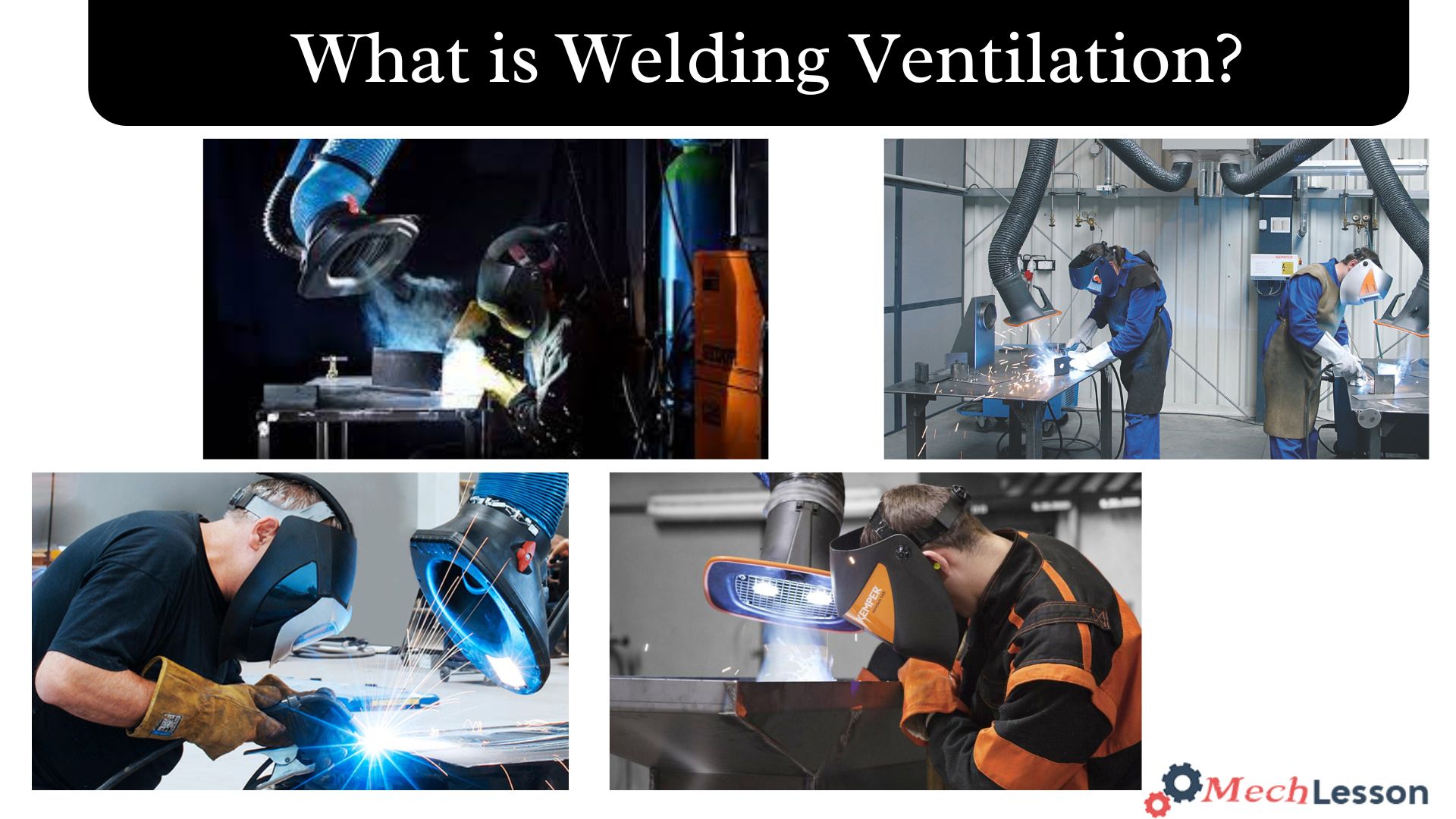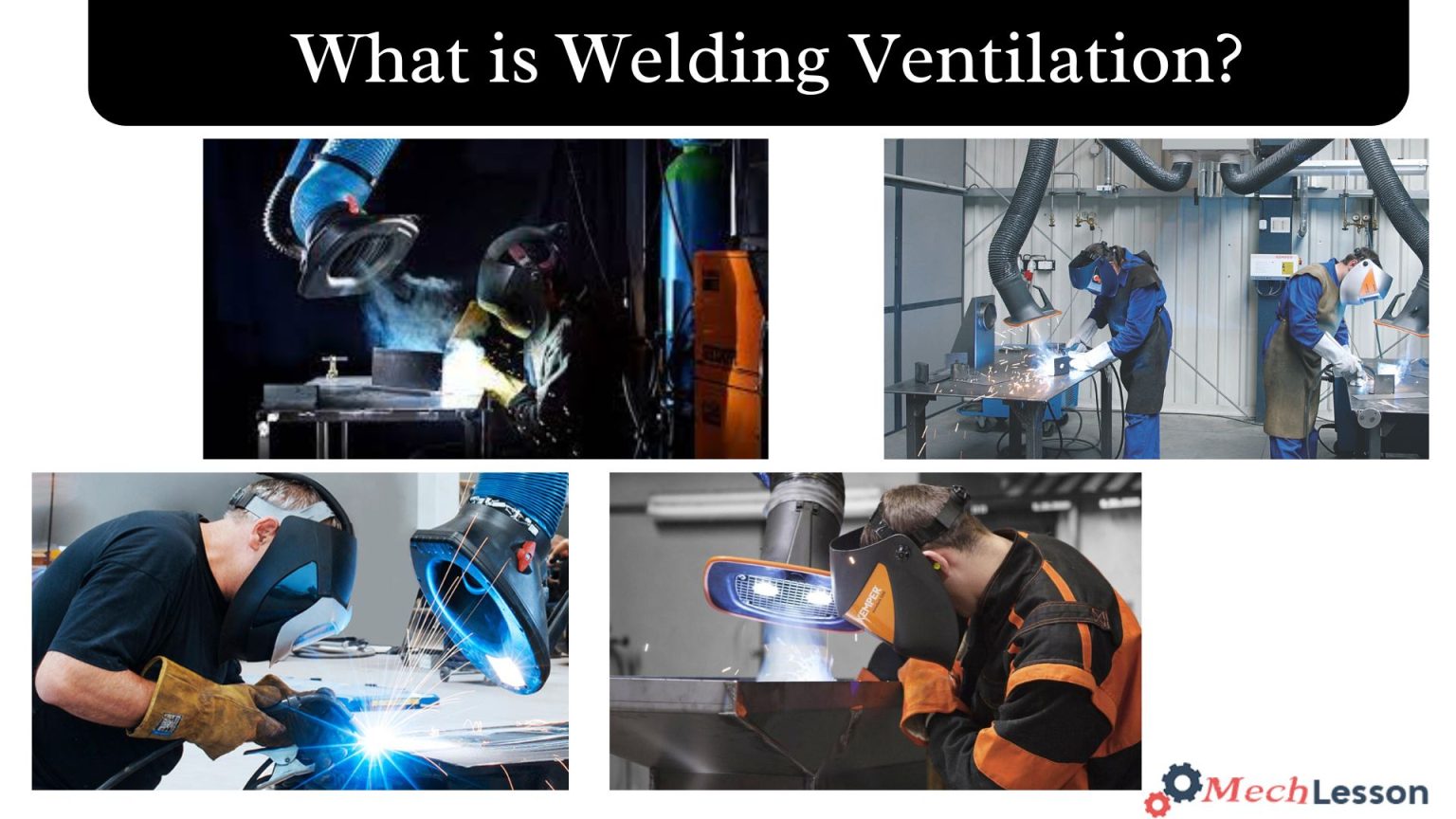Local exhaust ventilation (LEV) is the recommended technique. Because a well-designed welding helmet diverts the plume away from the welder’s breathing zone, it can help lower the amount of welding fumes that one is exposed to.
Well, in this reading, we’ll explore what welding ventilation is, its diagram, types, effectiveness, safety, and their examples.
Let’s begin!
Learn about Welding Inspection with this detailed guide!
What is Welding Ventilation?
Welding ventilation is particularly important for removing hazardous gases and vapours and protecting welders and others nearby. It can be achieved mechanically or naturally. Welding fumes and gases are always best removed via local exhaust ventilation (LEV).
OSHA sets PELs for various airborne contaminants, and employers must ensure that employee exposures remain below these limits. If engineering controls (ventilation) are not sufficient to maintain exposures below PELs, employers must provide and require the use of appropriate respiratory protective equipment.
Employers must provide adequate ventilation, which can be achieved through local exhaust ventilation and general ventilation.
The local exhaust ventilation involves using hoods or booths positioned near the welding operation to capture and remove contaminants at their source. While general ventilation involves providing sufficient airflow to dilute and remove contaminants from the entire workspace.
Diagram

Learn about Tack Welding with this detailed guide!
Types of Welding Ventilation Methods
These are the following types of ventilation in welding:
1. Natural Dilution Ventilation:
By using mechanical devices like wall and roof exhaust fans or non-mechanical ones like opening windows and doors, dilution ventilation introduces fresh air into a space. Out of the plume, weld. To protect yourself from the plume, use a welding helmet that fits snugly.
To lower the concentration of an airborne pollutant and eventually eliminate it, fresh air can be introduced to a space by opening doors, windows, and other openings in a building’s construction. Since there is no direct control over how the airborne pollutants will flow through the work area, this sort of ventilation is typically regarded as the least effective.
Constrained spaces should not be ventilated via natural dilution ventilation in places with structural elements that hinder or block natural airflow or where the airborne pollutant includes a highly hazardous or carcinogenic material.
2. Mechanical Dilution Ventilation:
Wall fans, roof exhaust fans, and other mechanical devices are used in mechanical dilution ventilation to keep airborne pollutants out of a worker’s breathing zone.
3. Local Exhaust Ventilation:
When it comes to eliminating welding fumes and gases, local exhaust ventilation (LEV) is always the best option. Before the harmful gases, fumes, dusts, and vapours may combine with the ambient air, they are expelled or eliminated.
By redirecting the plume away from the welder’s breathing zone, a well-designed welding helmet can help lower a welder’s exposure to welding fumes.
Welding Ventilation Requirement
Local Exhaust Ventilation:
Air Velocity is one of the local exhaust systems that should provide a minimum air velocity of 100 feet per minute (fpm) across the welding zone. Hoods should be positioned as close as practical to the welding operation to capture contaminants effectively. Downdraft benches, with open grids, can be used to draw contaminants downward and into exhaust ducting.
General Ventilation:
For general ventilation, ensure a sufficient number of air changes per hour to maintain air quality. In confined spaces, mechanical ventilation is often necessary to ensure adequate air quality.
Learn about Fricton Stir Welding with this detailed guide!
Specific Materials:
When welding galvanised steel, employers must ensure that employees are not exposed to airborne concentrations of hexavalent chromium (Cr(VI)) in excess of 5 micrograms per cubic metre of air (5 µg/m³), calculated as an 8-hour time-weighted average.
When inert-gas metal-arc welding is being performed on stainless steel, employers must meet the requirements of paragraph (c)(2) of 1910.252 to protect against dangerous concentrations of nitrogen dioxide.
Confined Spaces:
Welding, cutting, or heating in confined spaces requires mechanical or local exhaust ventilation. If open ventilation is present and air sampling demonstrates that natural ventilation maintains atmospheric hazards below threshold limit values, mechanical ventilation may not be required.
OSHA Standards:
OSHA’s ventilation standards aim to protect workers from hazardous concentrations of airborne contaminants, including welding fumes and gases. These standards include:
- 29 CFR 1910.1000: Sets permissible exposure limits (PELs) for various airborne contaminants.
- 29 CFR 1910.252: Covers general requirements for welding, cutting, and heating operations.
- 29 CFR 1926.353: Covers ventilation and protection in welding, cutting, and heating operations in the construction industry.
- 29 CFR 1926.57: Covers ventilation in the construction industry.
Examples
Downdraft Bench: The work surface of a downdraft bench is an open grid. Contaminants are pulled into exhaust ducting when air is pushed downward via the grid. To keep pollutants from building up and ascending into the breathing zone, the airspeed must be high enough.
Workpieces that are excessively big might obstruct the ventilation airflow or create high-velocity air pockets, which could have an impact on shielding gases.
Moveable Bench: Hood That Can Be Moved, the capturing hood may be relocated to the desired location thanks to flexible ducting. Ensure that the air velocity over the welding arc is at least 100 feet per minute (0.5 metres per second).
The hood should be placed as near to the work as is practicable. The hood should be positioned approximately one duct diameter away from the arc.
Fume Extraction Welding Guns: The pollutants are pulled into the exhaust system via a pipe and eliminated very near the point of creation. They can work wonders in corners, around flanges, and on flat, vertical surfaces.
Effective Ventilation Practices in Welding
- Position welders upwind or away from fumes.
- Enclose welding areas to prevent drafts.
- Use fans to dilute fumes; be mindful of blowing locations.
- Use fume extractors to capture fumes at the source.
- Use welding hoods and booths to capture fumes before reaching the welder’s breathing zone
Safety Considerations in Welding
- Avoid welding in unventilated areas.
- Ensure ventilation systems don’t obstruct workplace access.
- Be aware of fire and explosion hazards from accumulated gases and dust.
Learn about How to Prevent Porosity Defects In Welding? with this detailed guide!
FAQs
What is the proper ventilation for welding?
The welding area should be enclosed as much as possible to avoid drafts that will blow the fumes away from the hood and/or further into the workplace. Ensure the hood is the right design for the process and type of fumes. Install an airflow indicator such as a manometer to check that the LEV is working properly.
What are the 2 ways to get ventilation into the welding area?
In smaller welding shops, natural ventilation may be enough if there are enough windows and doors to allow for adequate airflow. However, adding a mechanical system or a portable fume extractor can help ensure that air quality is maintained, especially during prolonged welding sessions.
What are the ventilation requirements for a welding shop?
According to OSHA regulations, when welding and cutting (mild steels), natural ventilation is usually considered sufficient to meet requirements, provided that the room or welding area contains at least 10,000 cubic feet (about 22′ x 22′ x 22′) for each welder.

